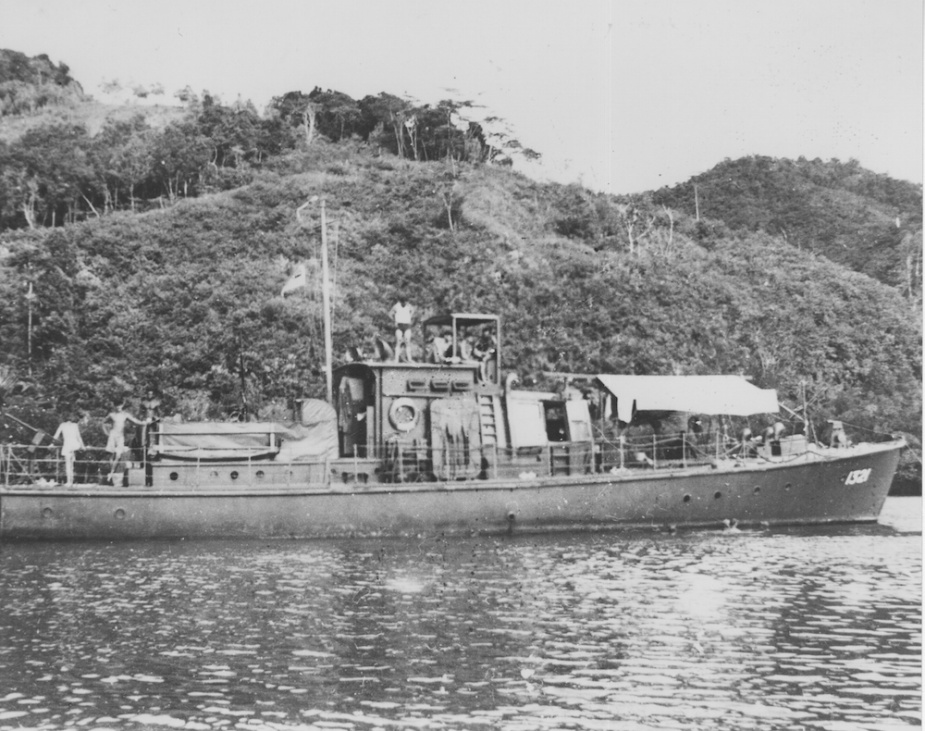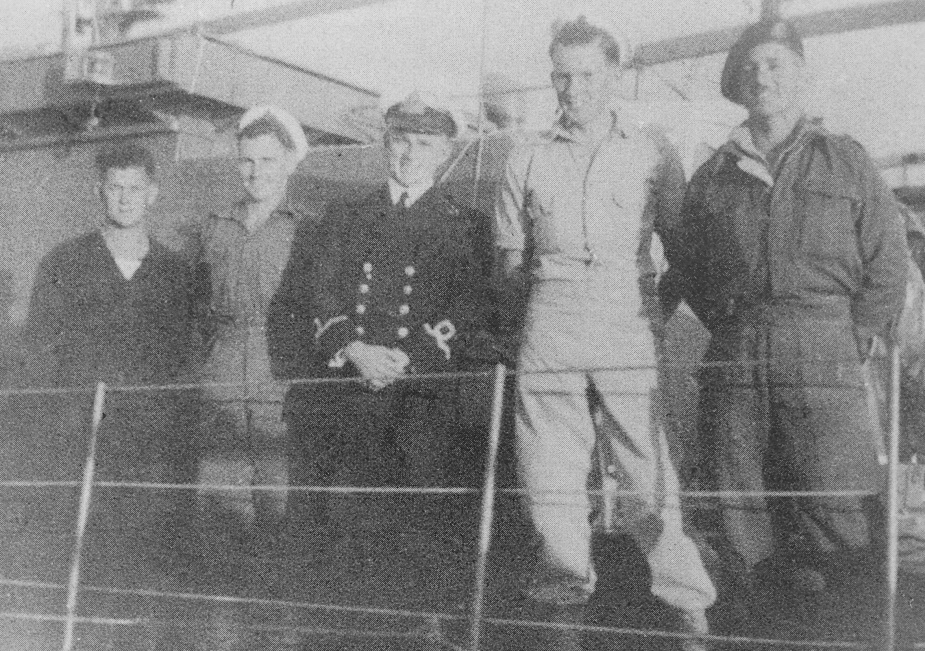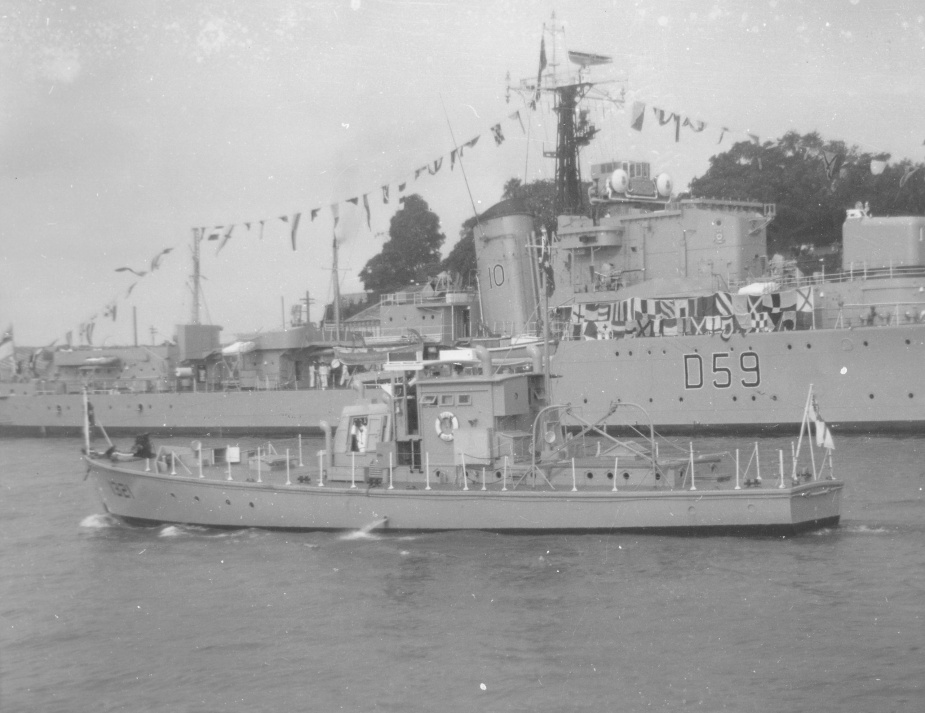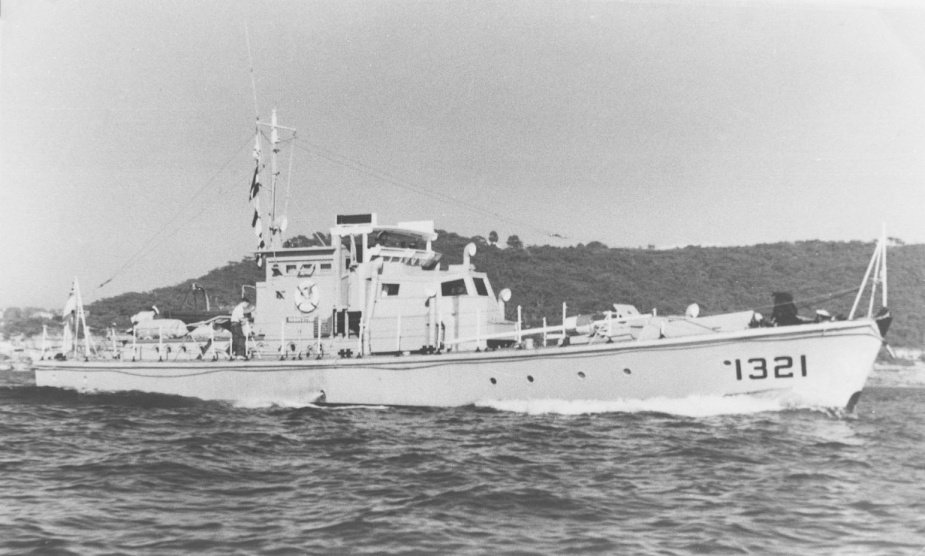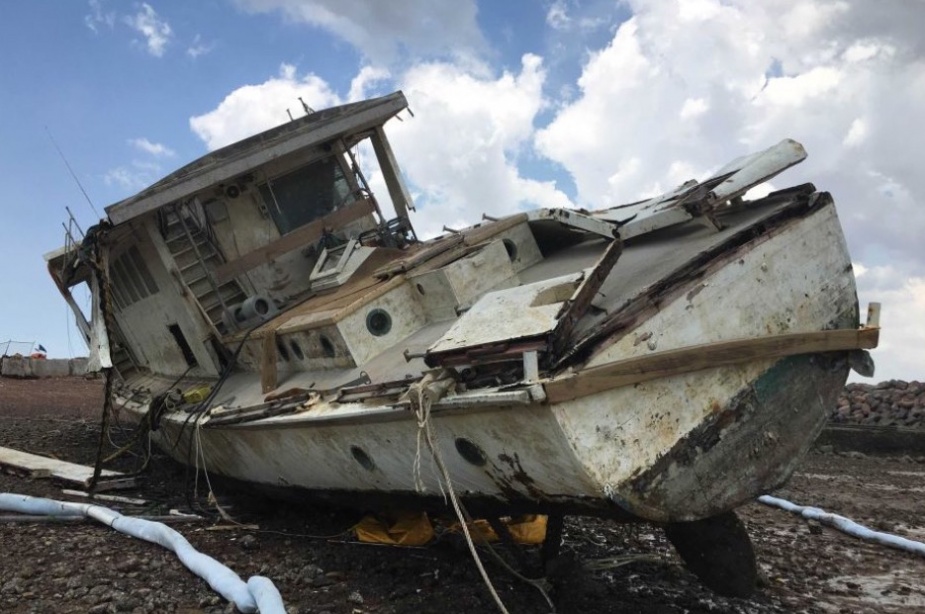HDML 1321
| Pennant |
1321 |
|---|---|
| Builder |
Purdon and Featherstone, Hobart, Tasmania |
| Laid Down |
14 April 1943 |
| Commissioned |
11 November 1943 |
| Decommissioned |
1970 |
| Fate |
Sold for commercial use |
| Dimensions & Displacement | |
| Displacement | 46 tons |
| Length | 80 feet |
| Beam | 15 feet 10 inches |
| Draught |
|
| Performance | |
| Speed | 12 knots |
| Complement | |
| Crew | 12 |
| Embarked Forces | Z Special Force |
| Propulsion | |
| Machinery | 2 x Buda Lanova 6 cylinder diesel engines, 200 bhp |
| Armament | |
| Guns |
|
| Other Armament | Small arms |
HDML 1321 was one of a class of thirty motor launches built for the Royal Australian Navy during World War II. Nine were constructed in Australian shipyards, three in the United Kingdom and eighteen in United States shipyards. They were originally classified as Harbour Defence Motor Launches (HDMLs) and those that remained in service following World War II were subsequently redesignated Seaward Defence Motor Launches (SDMLs) in the early 1950s and Seaward Defence Boats (SDBs) in 1957.
HDML 1321 was the first HDML to be constructed in Australia and was built in Tasmania by Purdon & Featherstone. She laid down on 14 April 1943 and commissioned in the RAN on 11 November 1943 under the command of Lieutenant Norman Grieve, RANVR, a former Royal Navy motor torpedo boat skipper experienced in operations against the German Navy in the English Channel. His first Lieutenant was Sub Lieutenant Abrose E Palmer, RANVR (Special Branch).
After commissioning, HDML 1321 proceeded to Williamstown, Victoria, where she remained until January 1944. She then proceeded via Sydney, Brisbane and Townsville to Milne Bay, New Guinea, arriving there on 1 February 1944. On 15 February 1944 the Australian Naval Board placed HDML 1321 under the operational control of the Supervising Intelligence Officer North Eastern Area (SIONEA). Her orders were, inter-alia, to carry out special Wireless Telegraphy Intelligence work and support Allied Intelligence Bureau (AIB) personnel and Australian coast watchers operating behind enemy lines. To that end the vessel had been especially modified for clandestine work and her appearance was visibly different to other HDMLs. The most striking feature was her bridge, which was extended aft, exhibiting a ‘box-like’ appearance. Shortly after arriving in New Guinea Lieutenant Grieve was appointed in command of HDML 1322 and Palmer was appointed in command of 1321. Sub Lieutenant Russel Smith joined the vessel as the First Lieutenant and his later reflections provide a unique insight into the nature of work the crew of 1321 was involved in:
The vessel was unique in that it had been seconded to the AIB and we were allocated the duty of servicing the famous coast watchers, taking in their food and equipment, bringing out their sick and so on. To do this we operated the whole time amongst the occupied islands in enemy waters. The Japanese used powerful barges and they were a constant hazard as they were armed with a 20mm twin-barrelled pom-pom, on a two-man mounting and were very accurate and dangerous. To counter the enemy menace, and with the help of our American friends, we armed our vessel in an unorthodox way. We added two automatic 37mm cannons plus four .5-inch heavy machine guns to back up our 40mm Bofors, 20mm Oerlikon and four rapid fire .303 machine guns.
Throughout 1944 HDML 1321 operated chiefly in New Guinea waters in and around Milne Bay, Lae, Langemak, Saidor and Dreger Harbour. In April 1945, Z-Special unit used 1321 in a mission, codenamed Operation COPPER. On that occasion 1321 embarked eight operatives, and their four folboats, at Aitape before taking them into enemy territory for a night landing on the island of Muschu near enemy-occupied Wewak. The purpose of the mission was to carry out reconnaissance of the enemy strength on the island, identify gun positions and, if possible, snatch a prisoner.
The insertion took place on the night of 11 April but it did not go according to plan. Although the operatives were successfully disembarked from 1321, prior to reaching the shore they ran into trouble and three of the folboats capsized after being caught in a strong current. Consequently, vital equipment and wireless equipment was lost. In spite of the setback, the group made it ashore, resting up before continuing their mission the following day. During their patrol they encountered numerous unmanned enemy machine gun nests which they dismantled and tossed into the sea. They then struck inland encountering a lone enemy soldier who was successfully captured, bound and gagged.
Although the Australian’s fortunes appeared to have changed for the better, the return trek to their temporary base camp was to prove otherwise. A wrong turn was taken and a strong Japanese patrol sighted. Taking cover in the jungle the patrol passed by but the Japanese captive was able to remove his gag calling out in Japanese to his countrymen. The Z-Special Unit men were then forced to silence their captive and engage the advancing enemy before breaking contact and retreating into the jungle.
After regrouping and resting for a period they made their way back to their temporary base but observed that the Japanese were waiting there in ambush. The following night they constructed a log raft and put to sea with a view to reaching the mainland five kilometres distant. Unfortunately their escape attempt failed when the raft broke up. Four of the group then attempted to reach the mainland using logs as floatation devices with the hope of being sighted by the morning reconnaissance flight that might direct HDML 1321 to them. They were not seen or heard of again.The remaining four men set out on foot for Cape Samein which was the pre-determined rendezvous point where 1321 was to recover them. En route they were attacked by a Japanese patrol. Sapper Mick Dennis killed two of the enemy but after the fight he did not see his other three companions again. Alone, he continued on to Cape Samein killing another enemy soldier and destroying a heavy machine gun on the way. On 17 April at 19:00 he put to sea on a self-made surf board he had fashioned and drifted to the mainland landing just west of Cape Pus at 04:00 the following morning. He was recovered by a patrol on the Hawain River at 14:00 on 20 April, six days after the affray in which the last of his companions had been killed. Dennis was awarded a Military Medal, for bravery in the field, in recognition of his actions.
HDML 1321 continued to serve in the New Guinea area throughout the remainder of 1945, punctuated with brief visits to Townsville and Brisbane. She returned to Australia in November 1945 after which she was chiefly based in Sydney. Redesignated a Seaward Defence Boat (SDB), 1321 was later renamed Rushcutter and was employed as a training ship throughout the 1950s remaining in service until 1970.
SDB 1321 was sold in 1971 for $14,200 and was subsequently converted into the charter boat Tambourine Bay. She was later sold to the Gosford area and renamed Rushcutter. On 23 October 2016 it was reported in the Northern Territory News that the former HDML 1321, had sunk in six metres of water in the small boat anchorage of Darwin Harbour. The vessel was subsequently raised on 20 November 2016 and efforts by her owners are ongoing to raise the necessary funding required to repair and restore the vessel to her wartime configuration.



